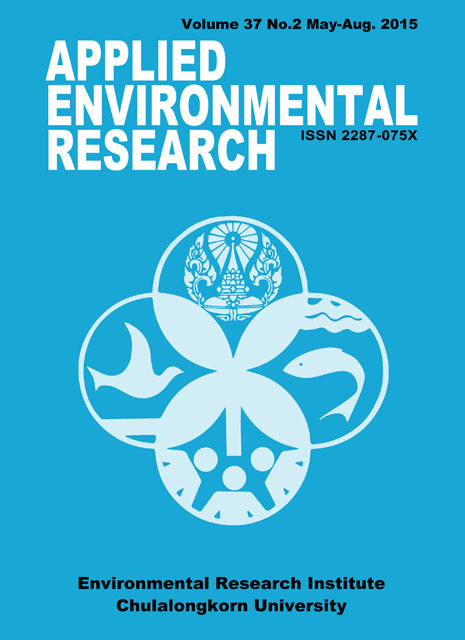Groundwater Recharge Potential Using GIS around the Land Development Facilities of Chulalongkorn University at Kaeng Khoi District, Saraburi Province, Thailand
Main Article Content
Abstract
Kaeng Khoi District (Saraburi Province, Thailand) suffers from a surface water shortage due to increasing demand from domestic use and crop production, particularly in the drought season. Groundwater resources are an additional source of freshwater in this area, especially for agricultural purposes, but to be sustainable its usage should not exceed long-term groundwater recharge. Evaluation of the groundwater recharge potential is therefore essential to determine the sustain-able use level for groundwater resources. This study aimed to determine the groundwater recharge potential using the geographic information system (GIS) around the Land Development Facilities of Chulalongkorn University at Kaeng Khoi District, Thailand. The hydrologic and geologic features affecting groundwater recharge potential into the groundwater system are the lineaments, drainage density, lithology and land cover/land use. The weighting of these factors were derived from integration of the interrelationship of the major and minor effects of each contributing factor. Then GIS overlay was used to determine the influence of the hydrologic and geologic effects on total groundwater recharge potentiality, classified into five categories: very high, high, moderate, low and very low. The highest recharge potential zone was located in the downstream areas. The map generated revealed that about 50 % of the study area had a medium groundwater recharge potential, mainly located in the eastern upstream part and the central area.
Article Details

This work is licensed under a Creative Commons Attribution-NonCommercial 4.0 International License.
Published articles are under the copyright of the Applied Environmental Research effective when the article is accepted for publication thus granting Applied Environmental Research all rights for the work so that both parties may be protected from the consequences of unauthorized use. Partially or totally publication of an article elsewhere is possible only after the consent from the editors.

